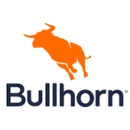Employee burnout takes many forms. For some, it manifests as a lack of motivation. In other cases, it triggers bouts of depression.
While this variation can make it hard to identify at first, burnout can have serious consequences. That’s why it’s crucial for managers to not only recognize these signs of exhaustion, but also seek ways to mitigate them, according to Dispatch CEO Patrick Burns.
“It’s important to stay vigilant when it comes to identifying and managing signs of burnout, because if it goes unchecked, it can lead to more serious behaviors, such as self-harm and substance abuse,” he said.
For Burns, supporting an employee experiencing workplace fatigue goes beyond expressing understanding. By lightening their workload or encouraging peers to take on some of their tasks, leaders can actively quell its effects.
Yet burnout isn’t always caused by too many assignments. According to Bullhorn Technical Director of Software Engineering Tanvi Gadre, spending significant time on Zoom or communicating frequently through Slack can also cause employees to lose steam.
That’s why Gadre makes it a priority to empower her teammates to fully log off once they’ve finished work for the day. “I encourage them to disable notifications on their devices and allow themselves to prioritize their personal lives,” she said.
Built In Boston caught up with Burns and Gadre to learn how leaders can effectively identify, manage and prevent employee burnout.

Bullhorn’s staffing software enables organizations to find and place talent, manage payroll, and deliver better experiences to job candidates.
What daily activities tend to lead to employee burnout?
Employees can easily become burned out if they’re spending too much time on Zoom calls and chatting with others frequently through Slack. These two communication channels reduce the actual time spent on daily scrum teamwork and add to an employee’s workload.
How do you help your team members avoid burnout?
Our company culture focuses heavily on employees’ mental health and well-being. As a manager, I support this by encouraging my teammates to regularly take time off. Having flexible work hours also helps my team balance work and personal life, especially with remote work. Considering that technology is readily available, and it’s easy to constantly keep track of work-related tasks, it’s essential to set boundaries.
I encourage my teammates to turn off notifications at the end of the day and allow themselves to prioritize their personal lives.”
What can managers do to prevent burnout from happening in the future?
Considering meetings often take away valuable work time and can be mentally draining, managers can consider removing unnecessary sync-ups, which is something I’ve done in the past. For example, we recently decided to remove meetings on Thursdays so that the team can focus more on collaboration and sprint work without the interruption of back-to-back morning discussions. This has proven to be beneficial so far, as it has added a nice break to our daily routines and has spurred team velocity.

Dispatch’s platform is designed to offer enterprise service brands real-time visibility into their field operations, allowing independent service provider networks to improve customer experiences.
How can you tell when an employee is feeling burned out?
It can sometimes be difficult to tell if an employee is burned out, especially if that person is a top performer who is hardworking and conscientious. There are obvious signs to look out for, such as a drop in productivity or uncharacteristic mistakes, yet it’s important to look beyond those as well. Additional indications include abnormal stress levels, depression, lack of motivation and, in extreme cases, physiological complications, such as high blood pressure or aggravated preexisting medical conditions.
How should managers react when they know an employee is experiencing burnout?
The most important thing to do is offer support. Even the greatest, most mentally strong individuals can experience burnout, and they need to know it’s a human condition rather than a personal failure. If anything, it’s a failure on the part of managers. Let them know it doesn’t affect their standing in the company and that mental health is a priority. Next, try to find the source of this burnout and resolve to fix it. Consider helping them by decreasing their workload, moving them off of a high-pressure project or encouraging their peers to take on some of their work. Lastly, make an effort to prevent that individual from feeling burned out in the future, whether that’s through the implementation of best practices, ongoing support or a role change.
They need to know it’s a human condition rather than a personal failure.”
What can managers do to prevent burnout from happening in the future?
Companies must maintain humanistic policies related to productivity and work-life balance. Managers should create an environment that discourages unnecessary burnout while cultivating a culture that values both balance and performance. It’s also important to develop a productivity model that prioritizes goals and company achievements rather than office hours, while filtering out managers who adhere to outdated expectations. Additionally, leaders should be trained to identify and prevent burnout. Ultimately, people deserve to be treated well. If you prioritize your employees’ well-being, your business will thrive.









